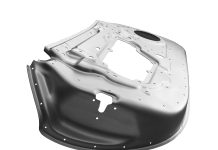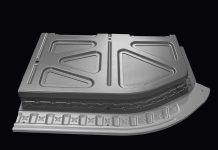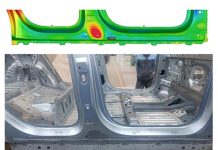In this guest post on value engineering Doug Hicks, President of D. T. Hicks & Co, describes the pitfalls of labor-based costing when used for arriving to cost calculations for producing parts, and outlines how to arrive to accurate cost projections for part production by considering pre-launch and post-manufacturing cost.
It was the mid-1980s when leaders in the management accounting community began sending out warnings that traditional cost accounting practices were undermining managers’ ability to make economically sound business decisions. In manufacturing, those “traditional” costing practices consisted of cost models that treated direct labor as the primary driver of costs. Direct materials and labor considered to be “direct” were traced to products; indirect costs not considered to be selling, general or administration were then assigned to products as a function of the “direct” labor; and the selling, general and administration costs were either ignored or spread among products like peanut butter using any convenient base. Such cost models worked well for manufacturers when product and process variety were minimal and direct labor was a major cost of manufacturing.
Today, however, the introduction of high-tech and computer-controller manufacturing processes, the ever increasing demand for complexity and variety in manufactured products, the adoption of lean manufacturing philosophies, and the expansion of pre-manufacturing and post-manufacturing services – including distribution and fulfillment – have pushed the realities of 21st Century manufacturing far beyond the capabilities of such simple cost models. They no longer provide a valid model of the economics that underlie a modern manufacturing organization and, as a consequence, no longer provide the quality cost information required to support quality business decisions. Unfortunately, many – if not most – manufacturers continue to use them.
What’s Wrong With Direct Labor-Based Cost Models?
In its simplest form, a manufacturer will use a single, plant-wide overhead rate – expressed as either a percentage of direct labor cost or an overhead cost per direct labor hour – to be added to direct labor’s hourly cost. All non-manufacturing costs will then be assigned to cost objectives (products, customers, etc.) as an add-on percentage (known commonly as an “SG&A rate”). The irrationality of such direct labor-based cost models should be apparent to anyone who gives it a second thought.
Is the cost of having a worker manually assembling or sorting parts the same having that same worker operate a 300-ton stamping press? If a large machine center requires the support of two workers does it cost twice as much as when it requires only one worker? Is the cost of heating parts in a furnace driven by how long it takes workers to load and unload parts? A direct labor-based cost model with a single, plant-wide overhead rate suggests that the answer to each of these questions is “YES” – an answer that totally defies logic.
Many accountants believe that if they segregate manufacturing into multiple cost centers and then develop separate direct labor-based overhead rates for each center, the problem will be averted. That is, unfortunately, not the case. A company using multiple direct labor-based overhead rates to apply indirect manufacturing costs and a traditional, company-wide, total-cost based “SG&A” rate to assign non-manufacturing costs to products and customers will continue to generate serious inaccuracies in determining product and customer costs. Consider the following:
Pre-Award Costs
The effort required to win business is not the same for every customer or market. For some customers, business requires one simple quote and the “win rate” for quotations is high while others require multiple, complex re-quotes and the “win rate” for quotations is low. Some customers provide detailed descriptions of the product being quoted while other require up-front, “at risk” design and engineering input. Some manufacturers have both customers that maintain long-term trusting relationships with them and vendors that treat them as potential “victims” and try to maneuver them into underpricing their products. The direct labor-based model groups the cost of supporting all these customer categories into a pool of SG&A costs and spreads them evenly among all customers. Does this result in an accurate picture of customer profitability?
Post-Award / Pre-Launch Costs
A great deal of cost can be incurred after a contract is awarded and before production begins. For relatively simple, common products that are sold to long-time customers these product or program “launch costs” may be relatively low, but for new, more complex products sold to a new customer they may be significant and have a major impact on overall product profitability. The direct labor-based model buries these cost in overhead and/or SG&A and, like pre-award costs, spreads them evenly among all product and customers. Is this a model that links these costs to products accurately?
The “Price” of Materials, Components and Outside Manufacturing Services vs. Their “Cost”
Is “the cost” of materials, components or manufacturing services purchased from other organizations really just “the price” paid for them? What about all the costs incurred to insure these items are where they need to be, when they need to be there? Shouldn’t they be included in “the cost” as well?
The true “cost” of materials, components and outside manufacturing services consists not only of the price paid for them, but the cost of all the resources consumed in making those items available when and where they are required including the cost of resources such as purchasing, quality, receiving, material control, storage, insurance, financing, accounts payable, and material handling.
The direct labor-based model makes no attempt to link the cost of these resources with the purchased items that make them necessary. It simply assigns them to overhead and then links them to products based on the products’ labor content. Does this provide a valid model of the economics that underlie an organization’s operation?
Assigning Manufacturing Costs to Products
Manufacturing equipment requires a fixed amount of investment cost regardless of how many hours it operates or how many workers are present. Occupancy costs and cost of capital are primary examples. Variable costs of operating manufacturing equipment (utilities, perishable tooling and other consumables) are generally driven by the operation of the equipment, not the activity of a worker. Linking such fixed and variable costs to the direct labor hours worked makes it appear as if these costs vary in direct proportion to those hours. A two-worker crew operating a piece of equipment implies that costs are twice as much as when a single worker can operate that equipment. A larger crew will imply that these costs increase when, in fact, they remain the same. The ramifications of this error are many; from industrial engineers miscalculating the impact of direct labor savings to losing profitable products due to overpricing or winning unprofitable jobs due to underpricing. Is the direct labor-based model assigning these costs to products appropriately?
In addition, many manufacturing operations include non-value-adding steps, such as in-process movement and storage, whose costs are buried in overhead rates that follow direct labor to products whether or not they relate to the product being produced. Does the direct labor-based model accurately link these non-value-adding activities to products?
Post-Manufacturing Costs
Most products are not shipped immediately upon completion. Instead, they are moved to storage, stored (sometime for a few hours and sometimes for a few months), picked, often sequenced, prepared for shipment, and shipped. For some products and customers these “costs to serve” the customer are immaterial, but for many they are significant. Because the cost of these activities lay buried in manufacturing overhead or the company’s SG&A rate, it is impossible to assign them to the customers that require them, thereby making accurate measures of customer profitability impossible Instead, these costs will remain buried in manufacturing overhead or SG&A and be spread like peanut butter to all customers in proportion to their product costs. Is this a way to understand customer profitability?
This is just a sampling of the common shortcomings inherent in direct labor-based costing at manufacturing firms. There are many others. Each manufacturer will have its own unique set of issues. Nevertheless, even with “band aids” applied to a direct labor-based cost model, the high-quality product, customer, and process cost information necessary for a manufacturer to make sound decisions and take effective actions will be non-existent. Instead, cost information will remain inaccurate and misleading.
What Difference Does it Really Make?
If the negative impact the distortions inherent in direct labor-based costing have on a manufacturer’s decision making are not obvious, understanding the effect they have on pricing decisions should help make the connection crystal clear. There is a law of economics – known at my firm as Hicks’ First Law of Pricing – that applies here. That law goes like this: “A company will get a lot of business when it does not charge its customers for things it does for them, but it will not get much business when it attempts to charge its customers for things that it doesn’t do for them.”
For example, one manufacturer has overall productivity that is about average for its industry and marketplace. Under normal economic conditions, the market will allow this company, whose costs are at the industry average, to charge a price that will enable it to recapture its cost and earn enough of a profit to ensure its continuing ability to supply the marketplace. If this company accurately calculates its “fully-absorbed” costs and adds a market-supportable profit margin on each of one hundred possible contracts, it should be competitive on those contracts and will earn its expected profit margin on any contract it is awarded.
This situation is shown graphically in Figure 1 in which the horizontal axis represents one hundred contracts bid and the vertical axis the percentage accuracy of its fully-absorbed cost estimates. The market prices shown provide consistent margins above the accurately determined costs. The area between the market price and the 100% accurate contract costs represents the profit on any contract awarded at the market price.
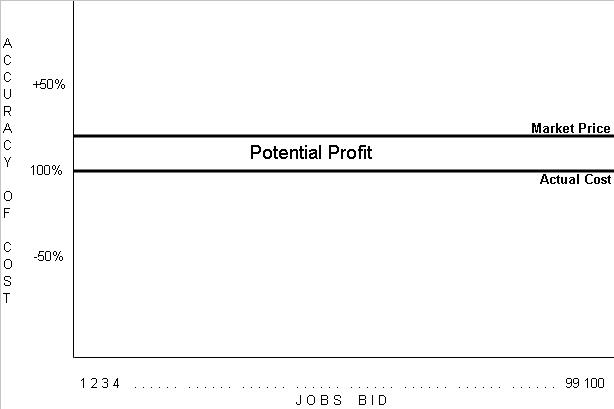
Figure 1 – Market Price/Profit Potential
If this company uses an inappropriate, over-generalized methodology (such as applying overhead costs on the basis of direct labor hours/dollars) to estimate its costs, it will overestimate the fully-absorbed cost on approximately one half of the contracts bid and underestimate the costs on the other half. As a result, it will establish an acceptable price (quoted price) at levels that will be under the market for those contracts whose costs were underestimated and over the market for those contracts whose cost were overestimated. This situation can be seen graphically in Figure 2 in which contracts are sequenced from left to right starting with the contract whose cost was most underestimated and ending with the contract whose cost was most overestimated.
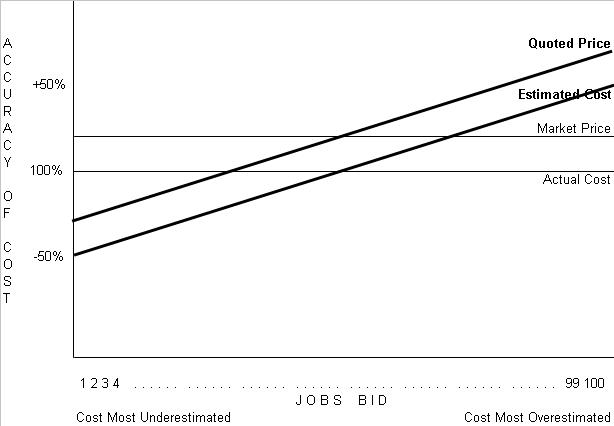
Figure 2 – Pricing Based on Over-Generalized Costs
Looking at the “Quoted Price” and “Market Price” lines, it is obvious that the company will be much more likely to be awarded contracts on the left side of the diagram – contracts bid at less than market price – for which it was “not charging the customer for things it does for them.” Conversely, it will not be awarded contracts on the right side of the diagram – contracts that could have been profitable at much lower prices – for which it was “charging the customer for things it does not do for them.” Unfortunately, actual costs do not care whether they have been over or underestimated; they will be actual either way. As Figure 3 clearly shows, if the company is awarded those contracts that were inadvertently priced below market, it has little or no change of financial success. At the same time it will be missing out on the potential profits that could have been earned at the market price on those contracts its inaccurate costing methodologies caused it to overprice.
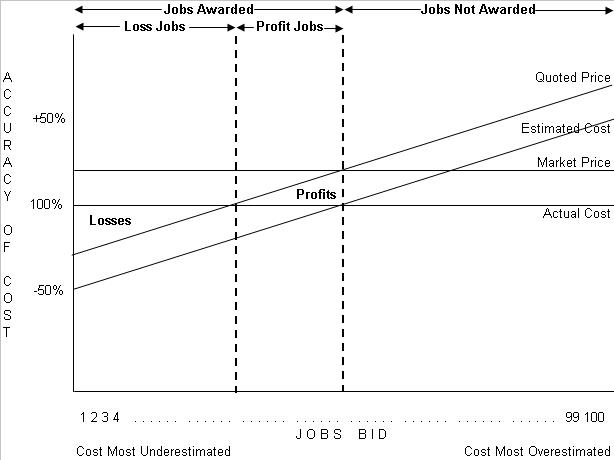
Figure 3 – Profitability Analysis of Contracts Won
Pricing is not the only area where direct labor-based cost models lead to low-quality decisions. Such models lead to miscalculated savings from operating improvements, inappropriate insourcing and outsourcing decisions, faulty evaluations of potential capital expenditures and invalid cost input for any other managerial decision requiring cost information.
Decision Cost Information ≠ Cost Accounting Information
One of the great philosophical mistakes in cost measurement and management is the belief that cost information for decision making must come from a company’s cost accounting system. The purpose of cost information is insight; insights that will improve a company’s decision making processes and enhance its bottom line. Cost accounting systems are designed to value the company’s overall inventory and calculate its overall cost of goods sold for use in company-wide financial statements – not to determine the cost of the individual elements that comprise the company’s operation. As a consequence, cost accounting systems incorporate too many generalities and shortcuts to provide accurate and actionable cost information.
A manufacturer does not need a great cost accounting system to have high-quality cost information to support its decisions. It needs a valid economic cost model of its business. Fortunately, the creation of a valid cost model that provides accurate, actionable cost information requires only a fraction of the resources needed to implement a new cost accounting system. A fundamentally sound ERP or other manufacturing information system is still important – it provides much of the data necessary to populate the cost model – but it’s the model that generates accurate, relevant and actionable cost information, not the system. Many manufacturers have created and used valid cost models to enhance their bottom lines without changing their day-to-day cost accounting systems.
Conclusion
A 21st Century manufacturing firm using a direct labor-based cost model to determine costs for use in supporting decisions is putting itself at considerable risk. Direct labor may have been an appropriate basis for developing cost information when competition was less, products were uniform, customers demanded few, if any, extra services and direct labor was the major factor in manufacturing. None of that is true today. Today’s manufacturing environment requires high-quality cost information – information based on a valid economic cost model of the business – if the manufacturer is to thrive and grow in the future.
About the Author:
 Doug Hicks has been helping manufacturers develop practical, down-to-earth methods for improving the quality of their managerial costing information for over three decades. He has shared his experiences through hundreds of presentations, scores of articles and three books including his rebuke of fellow accountants, “I May Be Wrong, But I Doubt It: How Accounting Information Undermines Profitability.” You can learn more at D. T. Hicks & Co.’s website: www.dthicksco.com.
Doug Hicks has been helping manufacturers develop practical, down-to-earth methods for improving the quality of their managerial costing information for over three decades. He has shared his experiences through hundreds of presentations, scores of articles and three books including his rebuke of fellow accountants, “I May Be Wrong, But I Doubt It: How Accounting Information Undermines Profitability.” You can learn more at D. T. Hicks & Co.’s website: www.dthicksco.com.
Thank you Doug for this insightful post! New readers, now is a great time to sign up for our blog. We’ll never send you marketing emails, you’ll just receive a recommendation for top recent posts once per month.






